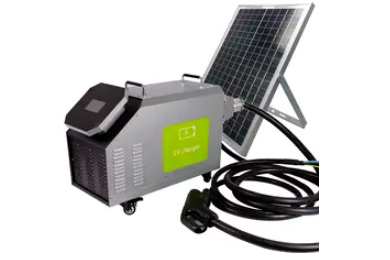Innovative Approaches for Efficient Energy Coverage and Enhanced Customer Experience

Electric vehicle (EV) charging stations play a crucial role in supporting the growth of sustainable transportation systems. In tourist attractions, where visitor mobility is a key concern, the layout and service strategy of these charging stations require special attention. This article aims to explore different aspects of designing and planning EV charging stations in tourist attractions, focusing on efficient energy coverage and enhanced customer experience.
The layout of electric vehicle charging stations in tourist attractions should prioritize efficient energy coverage. This involves analyzing visitor traffic patterns and identifying high-demand areas where the stations should be strategically placed. To achieve optimal coverage, charging stations should be evenly distributed throughout the attraction, considering factors such as parking availability and proximity to popular amenities.
Additionally, the placement of stations such as the AC level 2 charging station should also consider the availability of renewable energy sources, such as solar or wind power, to promote sustainability. By integrating renewable energy into the charging infrastructure, tourist attractions can not only reduce their carbon footprint but also enhance the overall appeal of the EV charging experience.
Providing personalized services by the EV car charger factory is essential to create a positive customer experience at EV charging stations in tourist attractions. This can be achieved through various strategies, including: - Pre-booking and reservation systems: Implementing an online platform where visitors can reserve their charging slots in advance can eliminate waiting times and ensure a seamless experience. - Enhanced amenities: Designing charging stations with amenities such as Wi-Fi access, comfortable seating areas, and convenience stores can cater to visitors' needs and enhance their overall satisfaction. - Accessible information: Clear signage, interactive displays, and mobile apps can provide real-time information on charging availability, station location, and nearby attractions, facilitating visitors' charging experience.
The incorporation of smart technology in the operation of EV charging stations can significantly improve efficiency and customer satisfaction. Here are some examples of how such technology can be integrated: - Mobile payment systems: Implementing contactless payment methods, such as QR codes or mobile payment apps, can simplify the payment process and reduce waiting times. - Remote monitoring and maintenance: By utilizing IoT (Internet of Things) devices, charging stations can be remotely monitored for maintenance purposes, ensuring continuous functionality and minimizing downtime. - Demand forecasting: Analyzing historical data and visitor patterns can help predict charging demands, allowing for proactive station management and resource allocation.
In conclusion, the layout and service strategy of electric vehicle charging stations in tourist attractions should prioritize efficient energy coverage and enhanced customer experience. By optimizing the layout, providing personalized services, and integrating smart technology, tourist attractions can foster sustainable mobility while offering visitors a pleasant and convenient charging experience.